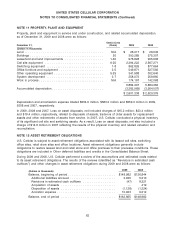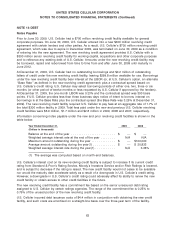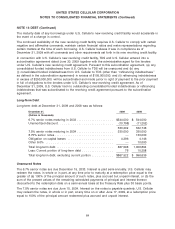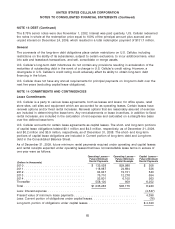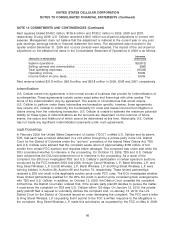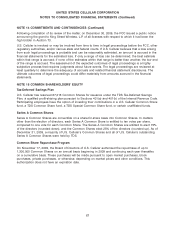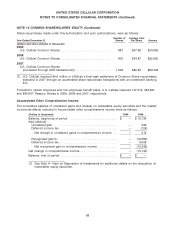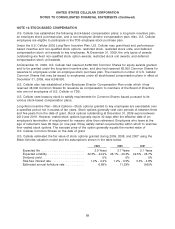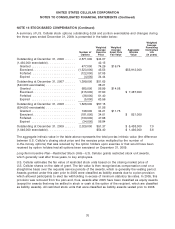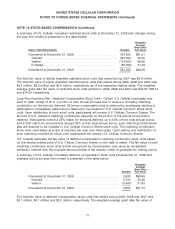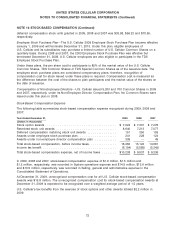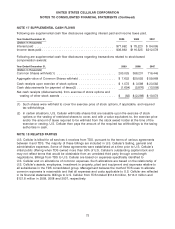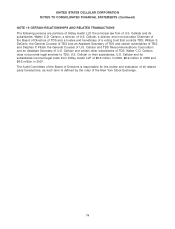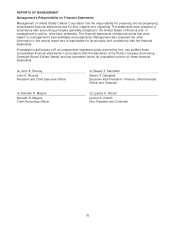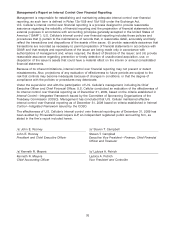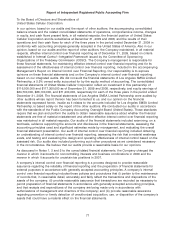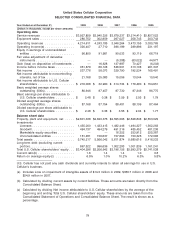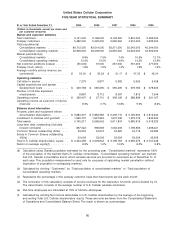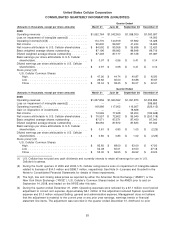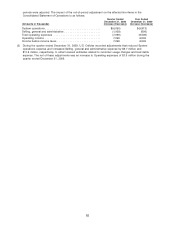US Cellular 2009 Annual Report Download - page 80
Download and view the complete annual report
Please find page 80 of the 2009 US Cellular annual report below. You can navigate through the pages in the report by either clicking on the pages listed below, or by using the keyword search tool below to find specific information within the annual report.
UNITED STATES CELLULAR CORPORATION
NOTES TO CONSOLIDATED FINANCIAL STATEMENTS (Continued)
NOTE 16 STOCK-BASED COMPENSATION (Continued)
deferred compensation stock units granted in 2009, 2008 and 2007 was $33.58, $56.23 and $70.55,
respectively.
Employee Stock Purchase Plan—The U.S. Cellular 2009 Employee Stock Purchase Plan became effective
January 1, 2009 and will terminate December 31, 2013. Under this plan, eligible employees of
U.S. Cellular and its subsidiaries may purchase a limited number of U.S. Cellular Common Shares on a
quarterly basis. During 2008 and 2007, the 2003 Employee Stock Purchase Plan was effective but
terminated December 31, 2008. U.S. Cellular employees are also eligible to participate in the TDS
Employee Stock Purchase Plan.
Under these plans, the per share cost to participants is 85% of the market value of the U.S. Cellular
Common Shares, TDS Common Shares or TDS Special Common Shares as of the issuance date. The
employee stock purchase plans are considered compensatory plans; therefore, recognition of
compensation cost for stock issued under these plans is required. Compensation cost is measured as
the difference between the cost of the shares to plan participants and the market value of the shares on
the date of issuance.
Compensation of Non-Employee Directors—U.S. Cellular issued 5,200 and 700 Common Shares in 2009
and 2007, respectively, under its Non-Employee Director Compensation Plan. No Common Shares were
issued under this plan in 2008.
Stock-Based Compensation Expense
The following table summarizes stock-based compensation expense recognized during 2009, 2008 and
2007:
Year Ended December 31, 2009 2008 2007
(Dollars in thousands)
Stock option awards ....................................... $ 7,024 $ 7,331 $ 7,276
Restricted stock unit awards ................................. 8,640 7,213 7,077
Deferred compensation matching stock unit awards ................ 151 350 155
Awards under employee stock purchase plan ..................... 241 228 124
Awards under non-employee director compensation plan ............ 306 — 49
Total stock-based compensation, before income taxes ............... 16,362 15,122 14,681
Income tax benefit ........................................ (6,154) (5,585) (5,345)
Total stock-based compensation expense, net of income taxes ........ $10,208 $ 9,537 $ 9,336
In 2009, 2008 and 2007, stock-based compensation expense of $1.9 million, $1.5 million and
$1.2 million, respectively, was recorded in System operations expense and $14.5 million, $13.6 million
and $13.5 million, respectively, was recorded in Selling, general and administrative expense in the
Consolidated Statement of Operations.
At December 31, 2009, unrecognized compensation cost for all U.S. Cellular stock-based compensation
awards was $15.8 million. The unrecognized compensation cost for stock-based compensation awards at
December 31, 2009 is expected to be recognized over a weighted average period of 1.5 years.
U.S. Cellular’s tax benefits from the exercise of stock options and other awards totaled $2.2 million in
2009.
72


